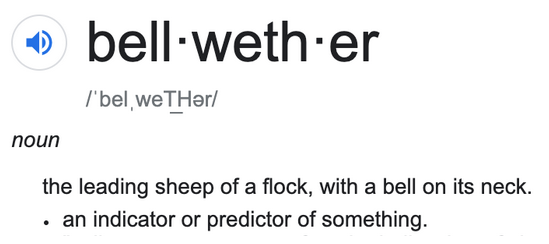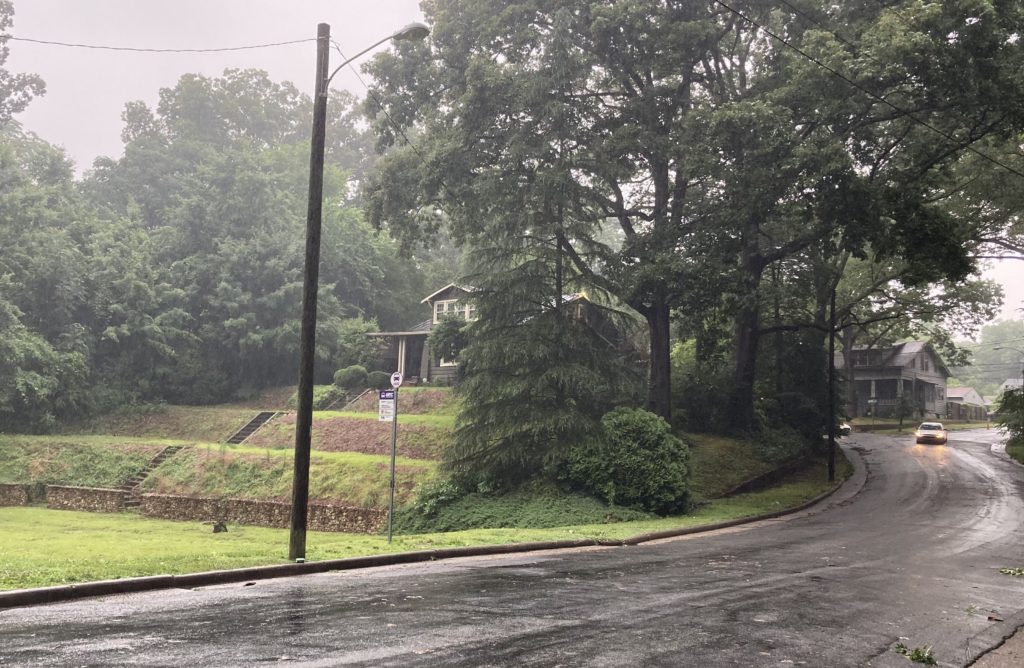Code4Lib 2021 lightning talk: Planning for the most; or, a bellwether speaks
I gave this 5-minute talk almost two years ago at Code4Lib 2021, but hadn’t yet shared it here. Slides are available through OSF; text is below. I’m no longer working at VCU, or in libraries, but wanted to share the talk here because this is something I continue to think about. Thanks for reading.
Planning for the most; or, a bellwether speaks
Hi folks,
…just a visit from your future, here. I’m the ram with the bell around its neck.
I’m Erin White. This is my 11th Code4Lib!
I’m head of digital engagement at VCU Libraries in Richmond, VA.
I’m also the interim digital collections librarian
…for the past five years or so.
Interim math

Shoutout to everyone who’s holding an interim appointment or who has absorbed a vacancy in your area. I know many of y’all have been doing this math too. The past year in particular brought so much hardship across all vectors of our lives, and at work that likely included layoffs, retirements, health-related departures, and other stark changes.
I’m in a relatively good position – I get to say how much of this work has to get done. Still, it turns out half-assing a job for a quarter of my time means projects move really slowly or not at all. [2023 editor’s note: “half-assing” was sarcastically used here to mean, “Learning how to do a job I had not done before.” A reminder that we need to be kind to ourselves and others when we take on new roles!]
Where we’re headed
I’m not sharing this with you to complain. It’s not an indictment of my employer. I share it because I think this is where we’re headed.

The early 2000s were a boom time for mass digitization and library investment in digital collections. It was a time of huge growth and excitement in digital libraries.
But, y’all, library budgets are not getting bigger. It’s not that we’re temporarily in tough times. This is how things are and will be. It sure seems to me that digital collections work, and other types of important but invisibilized work in the library, will continue to be deprioritized when budget conversations inevitably get tough. [2023 editor’s note: All this in a broader U.S. political and fiscal climate increasingly hostile to higher ed, libraries, and cultural heritage institutions.]
I won’t tell you not to hope, and fight, for the best.
I will tell you to plan for the worst. Or rather, to plan for the most. ‘Cause this is where most of us are heading. And it’s not necessarily the worst. It’s just different.
The last mile problem
There are a lot of ripple effects of disinvestment that I could talk about, but I only have a few minutes, so I’ll talk about the ones that haunt me most. 🙂
At Code4Lib 2014 Sumana Harihareswara gave a keynote that I still think about.
She talked about the last mile problem: the “largest hurdle we face in making things usable.” She gave many good examples and even wrote it up into a C4L journal article.
The bottom line is that many people don’t use services, even ones that are “best” for them, because they’re simply not usable.
The most beautiful bus stop

Here is a picture of the most beautiful bus stop in Richmond, VA. It’s my bus stop.
[2023 editor’s note: original slide text noted that there is no sidewalk, no bench, no shelter, and the stop is only serviced (unreliably) once per hour. This is still true.]
While this bus stop has the loveliest views, it has zero amenities. It’s inaccessible for many of my neighbors. And it only works well for me because I have a smartphone to check in on bus status, I have flexibility on what time I can arrive at my job, and I can walk quickly down a road with no sidewalk, dodging traffic, to catch a ride. If any of those things were to become untrue, or when the weather goes south, I can’t use the service easily.
This example is the very literal definition of the last mile problem.
The most beautiful workflows
One of the ways the last mile problem has manifested in my work-life has been that, even after a year and a half of using Islandora for our digital collections, we still haven’t figured out a workflow to batch-upload collections. We have added only one item to our digital collections since fall 2019.
First of all, as I said a few slides back, this is a result of disinvestment in libraries as a whole. Like many departments in our library, we’ve had a vacant position for years.
This is also a documentation problem. To get our process sorted out we’ve been hanging on every word of this 7-year-old blog post that’s only accessible through the Wayback Machine.
This is also, fundamentally, a last-mile problem. This upload process was designed assuming every institution had people with scripting expertise and, more importantly, time to design, code, and troubleshoot each bulk upload.
It feels personal. It’s not.
I am actually ashamed to admit this. I feel this failure in my body. I know that if I carved out two solid days I could probably get something working, right? It seems so fundamental! It should be simple. If I just tried harder. If I just had more time.
But this isn’t about me. This isn’t really about Islandora either. (BIG love and gratitude to the community of maintainers for Islandora. I know a lot of this is different in version 8. Again, this isn’t about Islandora.)
This is about beautiful bus stops that only a few people in good circumstances can use. We can and must design more usable things for each other.
Planning for the most
- Design for the margins
- Design for use
- Assume nothing
- Collaborate & de-silo
- Define innovation as a social process rather than a technical one
So I ask you to think of this. How can we adjust the angle of our vision? To set our sights on each other instead of the distant horizon of another cutting-edge revolutionary technology that’ll solve all our problems?
What if instead of thinking of this as “planning for the worst” we see it instead as “planning for the most”? Because most of us are pressed for time, for money, for the brain cells to rub together to create new workflows.
By designing for needs of institutions that have fewer resources, we can design for everybody. Because the center is NOT holding. The dividing line between have- and have-not institutions is only getting stronger, with fewer in between.
Cultural heritage organizations must continue to become interdependent with each other as time goes along. Consortial, collectively-held platforms and communities are the way we need to go. Code4Lib itself is a model of how this can work. We can make this work!
So consider this an invitation.
Let’s keep building the future we need, together.
Postscript
This talk was inspired by all of my amazing colleagues doing library tech and digital collections work, and by the book Design Justice by Sasha Costanza-Chock. Thank you to Drew Heles at LYRASIS who reached out last year about this presentation and inspired me to post it.
When I gave this talk in March 2021, I got some feedback that it was too gloomy. After 13 years in the field, and well over a year after giving this talk, I stick by it. My takeaway is actually not gloomy at all; it’s hopeful. I believe we can have proactive new visions for the future instead of waiting for things to improve. No way out but through, no way through but together.
In the time since this talk I have left libraries and moved to a new city. My (former) institution is currently hiring a digital collections librarian.
Thanks again for reading.